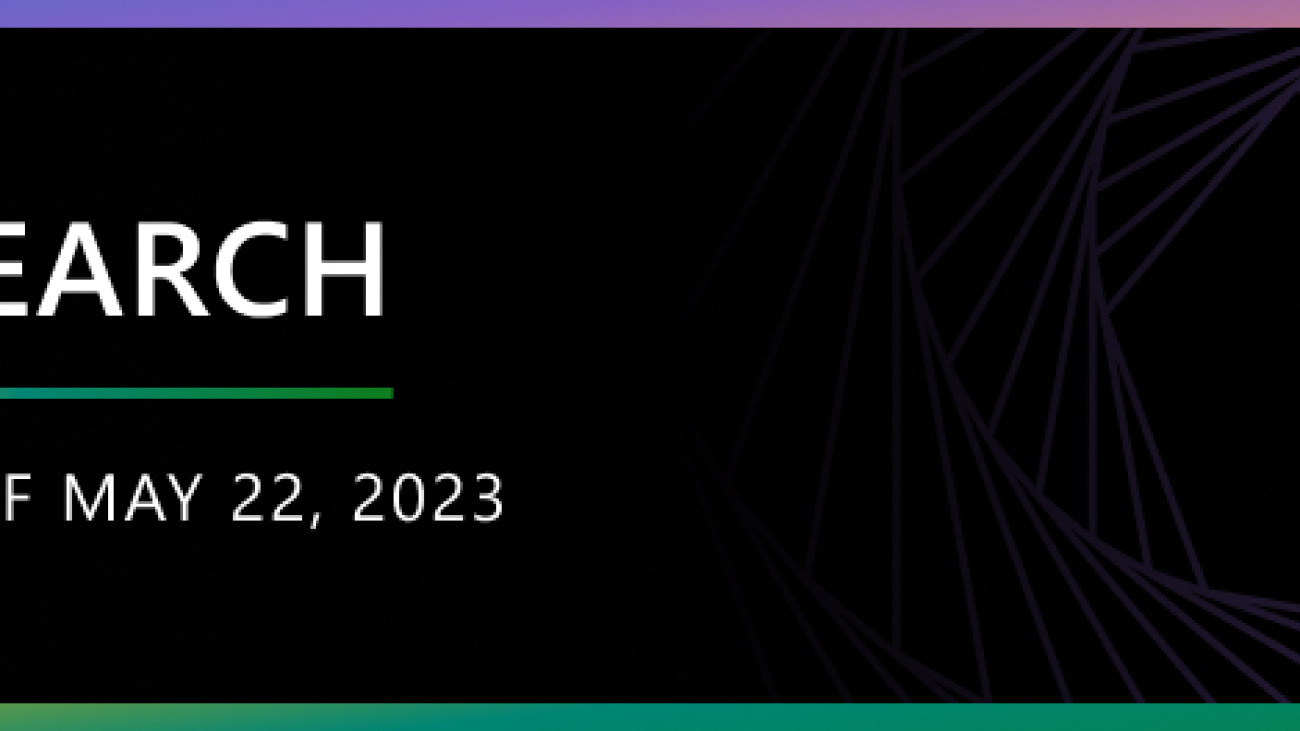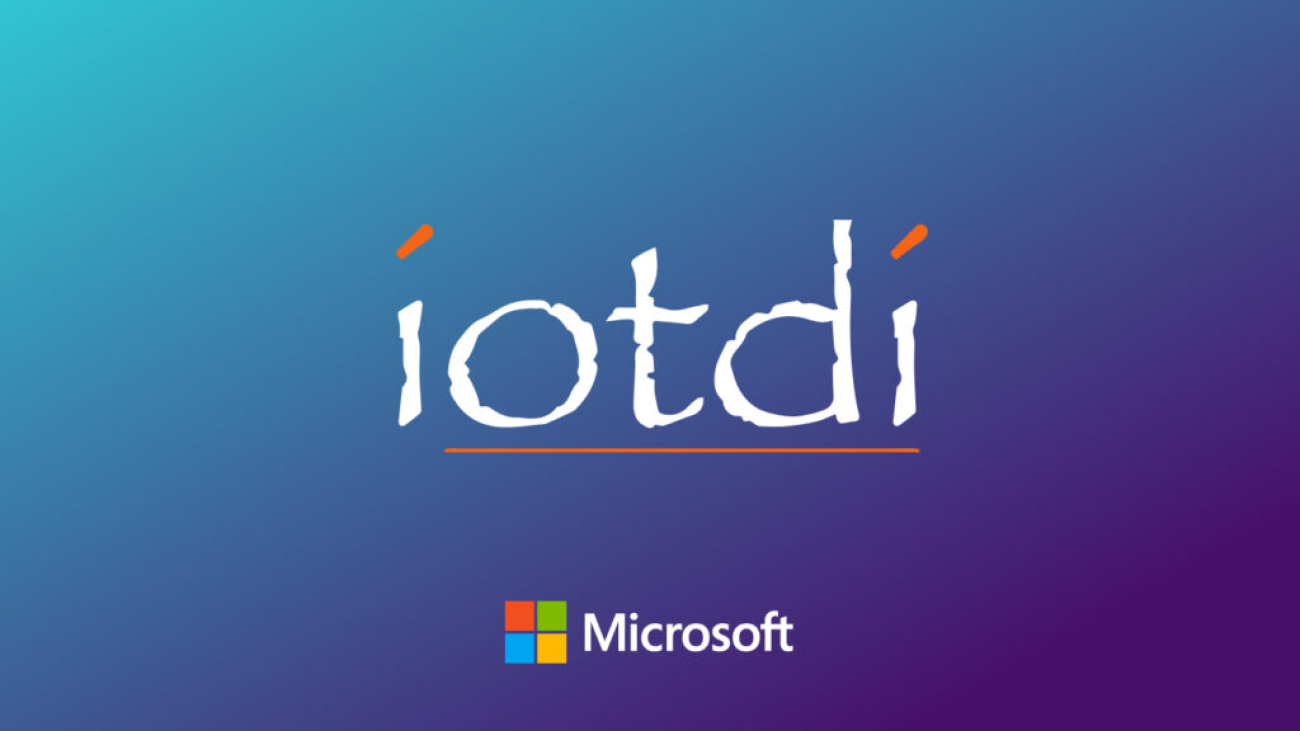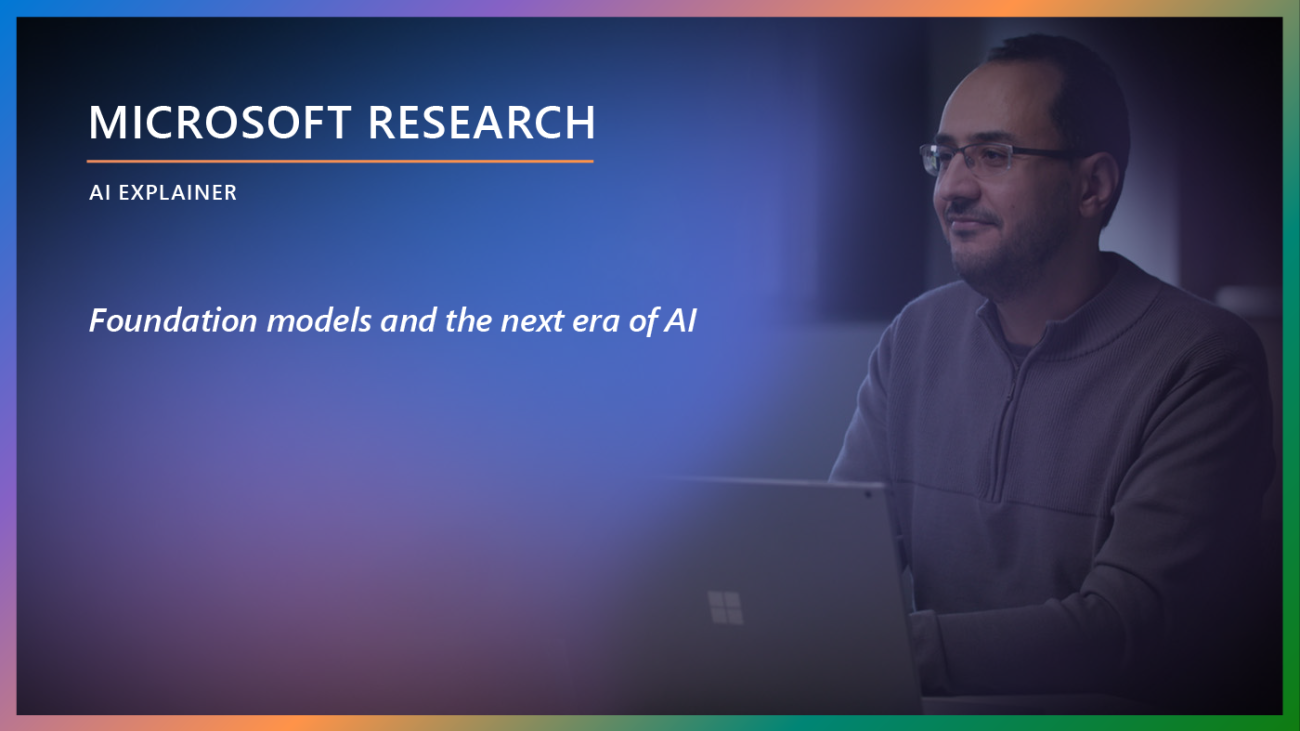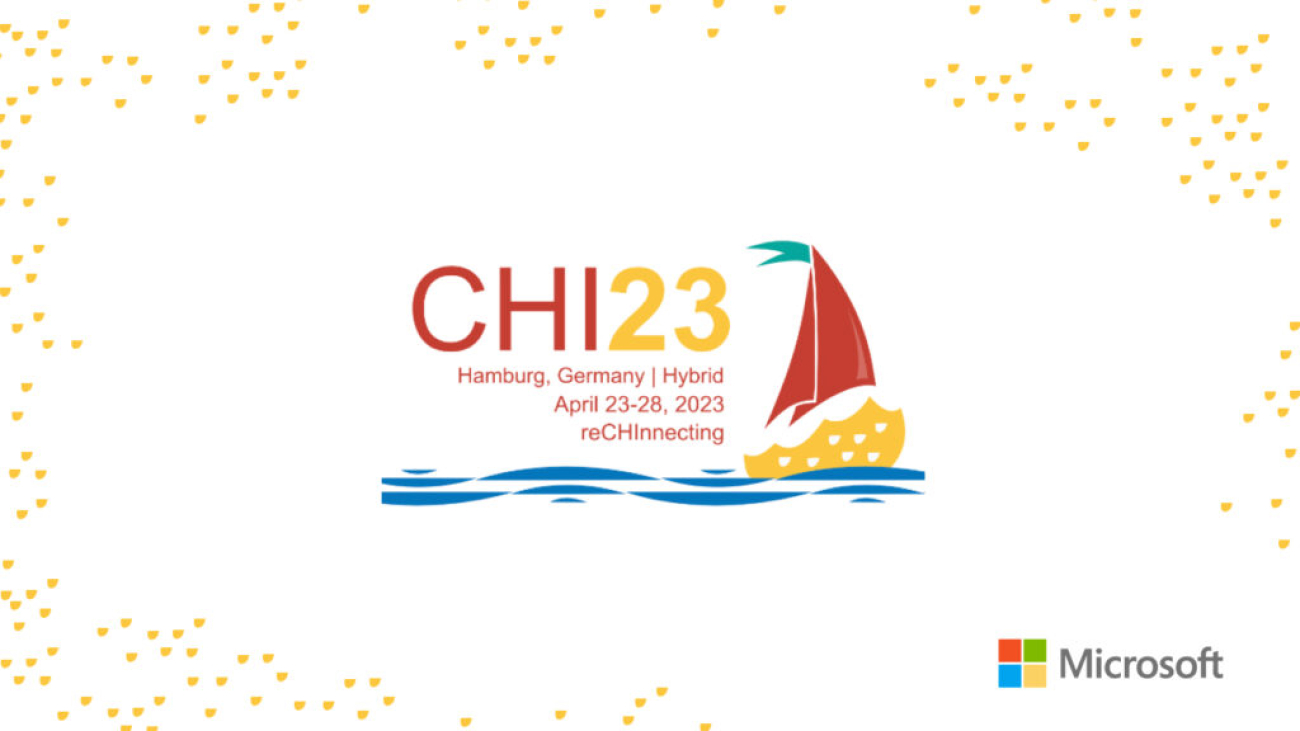[MUSIC FADES]
Emre, Amit, let’s jump right in. I’m so excited to speak with you both about causal reasoning. And this is such a timely conversation because we’re living through the rise of generative pretrained models, specifically large language models. And when I’ve engaged with GPT-4 in dialogue, depending on what I ask, it can appear to be doing something resembling causal reasoning. And as a machine learning person myself, I have to say this is not something that I’d expected to see from a neural network that works based on analyzing and generating statistical patterns. Um, you know, this is something that before this time last year, I thought of as a uniquely human skill as I think maybe many others have, as well. Now, both of you do this for a living. You study causal reasoning for a living. Um, and so where I’d like to start is with your first reactions to GPT-4, your first contact. What did you find surprising, and how did you feel, uh, as a researcher in this area? I want to go to Emre first on this.
EMRE KICIMAN: Sure. Well, um, yeah, I think I went through a process. Um, right now, I am surprised how much I’m depending on functionality from GPT-4 and how much I expect it to work. And yet, I also don’t quite believe that it can do the things that it’s doing. It’s really, um, a weird mind space to be in. I think the, the moment when I was a bit astounded by, like, what might be possible was actually before I got my hands on GPT-4 directly. You know, I’ve been hearing that people were very impressed with what it was doing. But the thing that made me reconsider my preconceptions was actually some of the academic research looking at, um, how transformer models and architectures could actually represent Turing machines, Turing-complete computational machines. And once I saw that the transformer architecture could represent that type of program, that type of thing, then I figured, well, all bets are off. We don’t know whether it’s learning this or not, but if it can represent it, now there really is a chance that it could, that it might be learning that. And so we have to really keep an open mind.
The second moment when I changed my mind again about what GPT-4 might be doing … so I’ll give a little background. So once I saw some of the work that we’ll talk about here, uh, coming into play, where we’re seeing GPT do some sorts of, you know, very interesting causal-related tasks, um, I was like, OK, this is great. We have our causal processes; we’re just going to run through them and this fits in. Someone will come with their causal question; we’ll run through and run our, our causal analysis. And I thought that, you know, this all makes sense. We can do things that we want, what we’ve wanted to do for so, for so long. And it was actually reading, uh, some of the vignettes in Peter Lee’s book where he was quizzing, uh, GPT-4 to diagnose a patient based on their electronic health records, explain counterfactual scenarios, um, think through why someone might have made a misdiagnosis. And, and here, all of a sudden, I realized our conceptualizations of causal tasks that we’ve worked on in the academic fields are kind of boxes where we say we’re doing effect inference or we’re doing attribution or we’re doing discovery. These like very well-circumscribed tasks are, are not enough; they’re not flexible enough. Once you have this natural language interface, you can ask so many more things, so many more interesting questions. And we need to make sure that we can formally answer those … correctly answer those questions. And, and this GPT-4 is basically a bridge to expressing and, you know, meeting people where they want to be. That really opened my eyes the second time.
LLORENS: Thanks, Emre. Amit, first impressions.
AMIT SHARMA: Yeah, my experience was back in December—I think it was when a lot of people were talking about ChatGPT—and me, thinking that I worked in causality, uh, I was quite smug, right. I knew that causality requires you to have interventional data. Language models are only built on some observations. So I was quite happy to think that I would beat this topic, right. But it was just that every day, I would see, perhaps on Twitter, people expressing new things that ChatGPT can do that one day, I thought, OK, let me just try it, right. So the first query I thought was an easy query for, uh, GPT models. I just asked it, does smoking cause lung cancer, right? And I was surprised when it gave the right answer. But then I thought maybe, oh, this is just too common. Let me ask the opposite. Does lung cancer cause smoking? Uh, it gave the right answer. No. Uh, and then I was literally struck, and I, and I thought, what else can I test, right? And then I thought of the all the causal relationships that we typically talk about in our field, and I started doing them one by one. And what I found was that the accuracy was just astounding. And it was not just the accuracy, but also the explanation that it gives would sort of almost make you believe that as if it is a causal agent, as if it is doing, uh, something causal. So, so to me, I think those few days in December with slightly sleepless nights on what exactly is going on with these models and what I might add … what am I going to do as a researcher now? [LAUGHS] I think that was, sort of, my initial foray into this. And, and I think the logical next step was then to study it more deeply.
LLORENS: And stemming from both of your reactions, you began collaborating on a paper, which you’ve recently released, called “Causal Reasoning [and] Large Language Models,” um, and I’ve had the, you know, the pleasure of spending some time with that over these last few days and, and a week here. And one of the things you do in the paper is you provide what I think of as a helpful overview of the different kinds of causality. And so, Emre, I want to go back to you. What is causality, and how can we think about the space of different, you know, kinds of causal reasoning?
KICIMAN: Causality … it’s the study of cause-and-effect relationships, of the mechanisms that, that drive, you know, what we see happening in the world around us. You know, why do things happen? What made something happen? And this is a study that spread out across so many disciplines—computer science, economics, health, statistics. Like, everyone cares about, about causality, to some degree. And so this means that there’s many different kinds of, you know, tools and languages to talk about causality, um, that are appropriate for different kinds of tasks. So that’s one of the first things that we thought we had to lay out in the paper, was kind of a very broad landscape about what causality is. And so we talk about a couple of different axes. One is data-driven causal analysis, and the other is logic-based causal reasoning. These are two very different ways of, of, of thinking about causality. And then the second major axis is whether we’re talking about causal relationships in general, in the abstract, like, uh, does smoking normally cause … or often cause cancer? Versus causality in a very specific context— that’s called actual causality. And this is something like Bob smoked; Bob got lung cancer. Was Bob’s lung cancer caused by Bob’s smoking? It’s a very specific question in this very, you know, in, in a specific instance. And so those are the two axes: data-driven versus logic and then general causality versus actual causality.
LLORENS: Amit, I want to go to you now, and I want to dwell on this topic of actual causality. And I actually learned this phrase from your paper. But I think this is a kind of causal reasoning that people do quite often, maybe even it’s the thing they think about when they think about causal reasoning. So, Amit, you know, let’s go deeper into what actual causality is. Maybe you can illustrate with some examples. And then I want to get into experiments you’ve conducted in this area with GPT-4.
SHARMA: Sure. So interestingly, actual causality in research is sort of the less talked about. As Emre was saying, I think most researchers in health sciences, economics often talk about general phenomena. But actual causality talks about events and what might have caused them, right. So think about something happens in the real world. So let’s say … I’ll take an example of, let’s say, you catch a ball and you prevent it from falling down, right. And I think people would reasonably argue that your catching the ball was the cause of preventing it from falling onto the ground. But very quickly, these kinds of determinations become complex because what could have been happening is that there could be multiple other factors at play, uh, and there could also be questions about how exactly you’re even thinking about what is a cause. Should, should you be thinking about necessary causes, or should you be thinking about sufficient causes, and so on. So, so I think actual causality before sort of these language models was kind of a paradox in the sense that the applications were kind of everywhere, going from everyday life to even thinking about computer systems. So if your computer system fails, you want to understand why this failure occurred, right. You’re not really interested in why computer systems fail in general; you’re just interested in answering the specific failure’s causes. And the paradox is that even though these sort of questions were so common, I think what research had to offer, uh, was not immediately systemizable or deployable, uh, because you would often sort of tie yourself in knots in defining exactly what you mean by the cause and also sort of how do you even get that framing without sort of just having a formal representation, right. Most of these tasks were in English, right, or in the case of computer systems, you would just get a debug log. So I think one of the hardest problems was how do you take something in vague language, human language, and convert it into sort of logical framing or logical systems?
LLORENS: In the paper, you explore briefly, you know, kind of actual causality that deals with responsibility or faults. And, you know, this connects with things like, you know, reasoning in the, in the legal domain. And so I just want to, I want to explore that with you. And I know I’ve jumped to the back of the paper. I just find these particular set … this particular set of topics pretty fascinating. And so tell me about the experiments that you’ve conducted where you ask, you know, the, the algorithm … the model to do this kind of actual causal reasoning around assigning blame or responsibility for something?
SHARMA: So one of the important challenges in actual causality is determining what’s a necessary cause and what’s a sufficient cause for an event, right. Now if you’re familiar with logic, you can break this down into sort of simple predicates. What we are asking is if an event happened, was some action necessary? It means that if that action did not happen, then that event would not happen, right. So we have a nice ”but for” relationship. Sufficiency, on the other hand, is kind of the complement. So there you’re saying if this action happens, the event will always happen, irrespective of whatever else happens in the world, right. And so, so far, in actual causality, people would use logic-based methods to think about what’s the right answer for any kind of event. So what we did was we looked at all the sort of vignettes or these examples that causality researchers had collected over the past decade. All of these are very challenging examples of situations in English language. And I think their purpose was to kind of elucidate the different kinds of sort of gotchas you get when you try to sort of just use the simple concept for real-world applications. So let me take you through one example in our dataset that we studied and how we’re finding that LLMs are somehow able to take this very vague, ambiguous information in an English-language vignette and directly go from sort of that language to an answer in English, right. So in a sense, they’re kind of sidestepping the logical reasoning, but maybe in the future we can also combine logical reasoning and LLMs.
So let’s take an example. Uh, it’s like Alice catches a ball. The next part on … the next destination on the ball’s trajectory was a brick wall, which would have stopped it, and beyond that there was a window. So as humans, we would immediately think that Alice was not a cause, right, because even if she had not stopped the ball, it would have hit the brick, and so if you’re asking if Alice was the cause of the window being safe, an intuitive answer might be no. But when you analyze it through the necessary and sufficient lens, you would find that Alice was obviously not a necessary cause because the brick wall would have stopped it, but Alice was a sufficient cause, meaning that if Alice had stopped the ball, even if the brick wall collapsed, even if other things happened in the world, the window would still be safe right. So these are the kind of sort of interesting examples that we tried out. And what we found was GPT-3.5, which is ChatGPT, does not do so well. I think it actually fails to identify correctly these causes, but GPT-4 somehow is able to do that. So it gets about 86 percent accuracy on, on this task. And one of the interesting things we were worried about was maybe it’s just memorizing. Again, these are very popular examples in textbooks, right? So we did this fun thing. We just created our own dataset. So, so now instead of Alice catching a ball, Alice could be, I don’t know, dropping a test tube in a lab, right? So we created this sort of a lab setup—a completely new dataset—and we again found the same results that GPT-4 is able to infer these causes.
LLORENS: Now you’re, you’re getting into experimental results, and that’s great because one of the things that I think required some creativity here was how you actually even structure, you know, a rigorous set of experiments. And so, Emre, can you take … take us through the experiment setup and how you had to approach that with this, you know, kind of unique, unique way of assessing causal reasoning?
KICIMAN: Well, one of the things that we wanted to make sure we had when we were running these experiments is, uh, construct validity to really make sure that the experiments that we were running were testing what we thought they were testing, or at least that we understood what they actually were testing. Um, and so most of these types of, uh, tests over large language models work with benchmark questions, and the biggest issue with the, with many of these benchmark questions is that often the large language models have seen them before. And there’s a concern that rather than thinking through to get the right answer, they’ve really only memorized the specific answers to these, to these specific questions.
And so what we did was, uh, we actually ran a memorization test to see whether the underlying dataset had been memorized by the large language model before. We developed … some of our benchmark datasets we developed, uh, as novel datasets that, you know, had never been written before so clearly had not been seen or memorized. And then we ran additional tests to help us understand what was triggering the specific answers. Like we would redact words from our question, uh, to see what would lead the LLM to make a mistake. So, for example, if we remove the key word from the question, we would expect the LLM to be confused, right. That’s, that’s fine. If we removed an unimportant word, maybe, you know, a participle or something, then we would expect that, that, that, that should be something that the LLM should recover from. And so this was able to give us a better understanding of what the LLM was, was paying attention to. This led us, for example, to be very clear in our paper that in, for example, our causal discovery experiments—where we are specifically asking the LLM to go back to its learned knowledge and tell us whether it knows something from common sense or domain knowledge, whether it’s memorized that, you know, some, uh, some cause, uh, has a particular effect—we are very clear in our experiments that we are not able to tell you what the odds are that the LLM has memorized any particular fact. But what we can say is, given that it’s seen that fact, is it able to transform it, you know, and combine it somehow into the correct answer in a particular context. And so it’s just, it’s really important to, to know what, uh, what these experiments really are testing. So I, I really appreciated the opportunity to go a little bit deeper into these studies.
LLORENS: I find this concept of construct validity pretty fascinating here, and it’s, you know, you, you stressed the importance of it for doing this kind of black-box testing, where you don’t actually have an explicit model for how the, well, the model is doing what it’s doing. And, you know, you talked about memorization as one important test where you’re, you know, you want to, you want to have a valid construct. But I think even deeper than that, there’s, there’s an aspect of your mental model, your beliefs about, you know, what the algorithm is doing and how relevant the testing you’re doing would be to future performance or performance on future tasks. And so I wonder if we can dwell on this notion of construct validity a little bit, maybe even one level deeper than the memorization, you know, you and your mental model of what’s happening there and why that’s important.
KICIMAN: My mental model of what the large language model is giving us is that it’s read so much of the text out on the internet that it’s captured the common sense and domain knowledge that we would normally expect only a human to do. And through some process—maybe it’s, maybe it’s probabilistic; maybe it’s some more sophisticated reasoning—it’s able to identify, like Amit said, the most important or relevant relationships for a particular scenario. So it knows that, you know, when we’re talking about a doctor washing his or her hands with soap or not, that infection, uh, in a patient is the next … is something that’s really critical. And maybe if we weren’t talking about a doctor, this would not be, you know, the most important consideration. So it is starting from capturing this knowledge, remembering it somehow in its model, and then recognizing the right moment to recall that fact and put it back out there as part of its answer. Um, that’s, that’s my mental model of what I think it’s doing, and we are able to demonstrate with our, you know, experiments that it is transforming from many different input data formats into, you know, answers to our natural language questions. So we, we have data we think it’s seen that’s in tabular format or in graphical formats. Um, and, you know, it’s, it’s impressive to see that it’s able to generate answers to our questions in various natural language forms.
LLORENS: I want to go now to a different kind of causality, causal discovery, which you describe in your paper as dealing with variables and their effect on each other. Emre, we’ll stick with you. And I also think that this is a, a kind of causal reasoning that maybe is closer to your day job and closer to the kinds of models maybe that you construct in the problems that you deal with. And so tell me about causal discovery and, you know, what you’re seeing in terms of the capabilities of GPT-4 and your, your experimentation.
KICIMAN: Yeah. So causal discovery is about looking at data, observational data, where you’re not necessarily intervening on the system—you’re just watching—and then from that, trying to figure out what relationships … uh, what the causal relationships are among the factors that you’re observing. And this is something that usually is done in the context of general causality, so trying to learn general relationships, uh, between factors, and it’s usually done in a, in a databased way—looking at the covariances, statistical covariances, between your observations. And, uh, there’s causal discovery algorithms out there. Uh, there are … this is something that’s been studied for decades. And there’s essentially, uh, testing statistical independence relationships that, you know, if something isn’t causing something else, then if you hold everything constant, there should be statistical independence between those two factors or different kinds of statistical independence relationships depending on what type of causal structures you see in, uh, among the relationships. And what these algorithms are able to do, the classical algorithms, is they can get you down to, um, a set of, a set of plausible relationships, but there’s always some point at which they can’t solve … uh, they can’t distinguish things based on data alone. They can, you know … there’s going to be a couple of relationships in your dataset where they might not know whether A is causing B or B is causing A, vice versa. And this is where a human comes in with their domain knowledge and has to make a declaration of what they think the right answer is based on their understanding of system mechanics. So there’s always this reliance on a human coming in with domain knowledge. And what, what we’re, uh, seeing now, I think, with LLMs is for the first time, we have some sort of programmatic access to this common sense and domain knowledge, just like in the actual causality setting. We have it provided to us again, uh, in the causal discovery setting. And we can push on this further. We don’t have … we can, if we want, run our data analysis first, then look at the LLM to, um, to disambiguate the last couple of things that we couldn’t get out of data. But we can also start from scratch and just ask, uh, the LLM to orient all of these causal edges and identify the right mechanisms from the beginning, just solely based on common sense and domain knowledge.
And so that’s what we did in our experiments here. We went through, uh, lists of edges and then larger graph structures to see how much we could re-create from, uh, just the common sense or domain knowledge that’s captured inside the LLM. And it did, it did quite well, beating the state of the art of the data-oriented approaches. Now, to be clear, it’s not doing the same task. If you have some data about a phenomenon that’s never been studied before, it’s not well understood, it’s never been named, the large language model is not going to be able to tell you—I don’t think it’s going to be able to tell you—what that causal relationship is. But for the many things that we do already know, it, it beats, you know, looking at the data. It’s, it’s quite impressive that way. So we think this is super exciting because it really removes this burden that we’ve really put on to the human analyst before, and now, now we can run these analyses, these … this whole data-driven process can be, uh, uh, built off of common sense it’s already captured without having to ask a user, a human, to type it all up correctly.
LLORENS: Amit, one of the things I found fascinating about the set of experiments that you, that you ran here was the prompt engineering and just the effect on the experimental results of different ways of prompting the model. Take us through that experience and, and please do get specific on the particular prompts that you used and their effects on the outcome.
SHARMA: Sure, yeah, this was an iterative exercise for us, as well. So as I was mentioning [to] you, when I started in December, um, the prompt I used was pretty simple: does changing A cause a change in B, right? So if you’re thinking of, let’s say, the relationship between altitude and temperature, it would just translate to a single sentence: does changing the altitude change the temperature? As we sort of moved into working for our paper and as we saw many different prompt strategies from other works, we started experimenting, right, and one of the most surprising things—actually shocking for us—was that if you just add … in these GPT-3.5 and 4 class of models, there’s a system prompt which sort of you can give some meta instructions to, to the model, and we just added a single line saying that “you are an expert in causal reasoning.” And it was quite shocking that just that thing gave us a 5-percentage point boost in the accuracy on the datasets that we were testing. So there’s something there about sort of prompting or kind of conditioning the model to be generating text more attuned with causality, which we found as interesting. It also sort of suggests that maybe the language model is not the model here; maybe it’s the prompt plus a language model, uh, meaning that GPT-4 with a great prompt could give you great answers, but sort of there’s a question of robustness of the prompt, as well. And I think finally, the prompt that we went for was an iteration on this, where instead of asking two questions—because for each pair we can ask, does A cause B or does B cause A—we thought of just making it one prompt and asking it, here are two variables, let’s say, altitude and temperature. Which direction is more likely? And so we just gave it two options or three options in the case of no direction exists. And there were two benefits to this. So, one, I think somehow this was, uh, increasing the accuracy even more, perhaps because choosing between options becomes easier now; you can compare which one is more likely. But also we could ask the LLM now to explain its reasoning. So we would ask it literally, explain it step by step going from the chain of thought reasoning. And its answers would be very instructive. So for example, some of the domains we tested, uh, we don’t know anything about it, right. So there was one neuropathic pain dataset, which has nodes called radiculopathy, DLS , lumbago. We have no idea, right. But just looking at the responses from the LLM, you can both sort of get a peek into what it’s doing at some high level maybe, but also understand the concepts and think for yourself whether those sorts of things, the reasoning, is making sense or not, right. And of course, we are not experts, so we may be fooled. We might think this is doing something. But imagine a doctor using it or imagine some expert using it. I think they can both get some auxiliary insight but also these explanations help them debug it. So if the explanation seems to be off or it doesn’t make sense, uh, that’s also a nice way of sort of knowing when to trust the model or not.
KICIMAN: One of the things that we noticed with these prompts is that, you know, there’s more to do in this space, too. Like the kinds of mistakes that it’s making right now are things that we think might be resolved at least, you know, in some part with additional prompting or thinking strategies. For example, one of the mistakes was, um, about … when we asked about the relationship between ozone and levels in radiation levels, and it answered wrong. It didn’t answer what, what was expected in the benchmark. But it turns out it’s because there’s ambiguity in the question. The relationship between ozone and radiation, uh, is one direction if you’re talking about ozone at ground level in a city, and it’s the other direction if you’re talking about ozone in the stratosphere. And so you can ask it, is there any ambiguity here? Is there any additional information you would need that would change the direction of the causal mechanism that you’re, you know, suggesting? And it’ll tell you; it’ll say, if we’re talking about in the stratosphere, it’s this; if it’s on the ground, it’s this. And so there’s really … I think we’re going to see some really fun strategies for improving the performance further by digging into these types of interrogations.
LLORENS: You know, the model is a kind of generalist in a way that most people are not or—I’m just going to go for it—in a way that no person is. You know, with all this knowledge of law and culture and economics and so many other … code, you know, so many other things, and I could imagine showing up and, yeah, a little bit of a primer on, a briefing on, well, here’s why you’re here and what you’re doing … I mean, that’s helpful for a person. And I imagine … and as we see, it’s helpful for these generalist, you know, general-purpose reasoners. And of course, mechanistically, what we’re doing is through the context, we’re inducing a different probability distribution over the tokens. And so I guess that’s … no, that’s what’s happening here. This is the primer that it gets before it steps into the room and, and does the Q&A or gives the talk, you know, as, as, as we do. But I want to get into a little bit now about where you see this going from here—for the field and for you as a researcher in the field. Let’s, let’s stick with you, Emre. Where do we go from here? What are some of the exciting frontiers?
KICIMAN: What I’m most excited about is this opportunity I think that’s opening up right now to fluidly, flexibly go back and forth between these different modes of causality. Going from logic-based reasoning to data-based reasoning and going beyond the kind of set tasks that we have well-defined for, for us in our field right now. So there’s a fun story that I heard when I was visiting a university a couple of months ago. We were talking about actual causality and connections to, to database causality, and this person brought up this scenario where they were an expert witness in a case where a hedge fund was suing a newspaper. The newspaper had run an exposé of some kind on the hedge fund, scared off all of their investors, and the hedge fund went belly-up. And the hedge fund was blaming the newspaper and wanted, you know, compensation for this, right. But at the same time, this was in the middle of a financial crisis. And so there’s this question of wouldn’t the hedge fund have failed anyway? A lot of other hedge funds did. Plus there’s the question of, you know, how much of an effect do newspaper stories like this usually have? Could it possibly have killed the hedge fund? And then there’s all the, you know, questions of normality and, you know, morality and stuff of maybe this is what the newspaper is supposed to be doing anyway. It’s not their fault, um, what the consequences were. So now you can imagine asking this question, starting off in this logical, you know, framing of the problem; then when you get down to this sub-element of what happened to all the other hedge funds—what would have happened to this hedge fund if, um, if the newspaper hadn’t written a story?—we can go look at the data of what happened to all the other hedge funds, and we can run the data analysis, and we can come back. We can go back and forth so much. I think that kind of flexibility is something I’m really going to be excited to see us, you know, able to automate in some fashion.
LLORENS: Amit, what do you think? Where do we go from here?
SHARMA: Yeah, I think I’m also excited about the practical aspects of how this might transform the causal practice. So, for example, what Emre and I have worked a lot on, this problem of estimating the causal effect, and one of the challenges that has been in the field for a long time is that we have great methods for estimating the causal effect once we have the graph established, but getting that graph often is a really challenging process, and you need to get domain expertise, human involvement, and often that means that a lot of the causal analysis does not get done just because the upfront cost of building a graph is just too much or it’s too complex. And the flipside is also that it’s also hard to verify. So suppose you assume a graph and then you do your analysis; you get some effect like this policy is better, let’s say. It’s very hard to evaluate how good your graph was and how maybe there are some checks you can do, robustness checks, to, to validate that, right.
And so what I feel the opportunity here is that the LLMs are really being complementary to what we are already good at in causal inference, right? So we’re only good at, given a graph, getting you an estimate using statistics. What the LLMs can come in and do is help domain experts build the graph much, much faster. So now instead of sort of thinking about, “Oh, what is my system? What do I need to do?” Maybe there’s a documentation of your system somewhere that you just feed into an LLM, and it provides you a candidate graph to start with. And at the same time, on the backend, once you have estimated something, a hard challenge that researchers like us face is what might be good robustness checks, right. So often these are … one example is a negative control, where you try to think of what is something that would definitely not cause the outcome. I know it from my domain knowledge. Let me run my analysis through assuming if that was the action variable, and then my analysis should always give an answer of zero. But again, like sort of figuring out what such variables are is more of an art than science. And I think in the preliminary experiments that we are doing, the LLMs could also help you there; you could again sort of give your graph and your data … and your sort of data description, and the LLMs can suggest to you, “Hey, these might be the variables that you can use for your robustness check.” So I’m most excited about this possibility of sort of more and more adoption of causal methods because now the LLMs can substitute or at least help people to stand up these analyses much faster.
LLORENS: Thank you both for this fascinating discussion. Understanding cause-and-effect relationships is such a fundamental part of how we apply human intelligence across so many different domains. I’m really looking forward to tracking your research, and the possibilities for more powerful causal reasoning with AI.





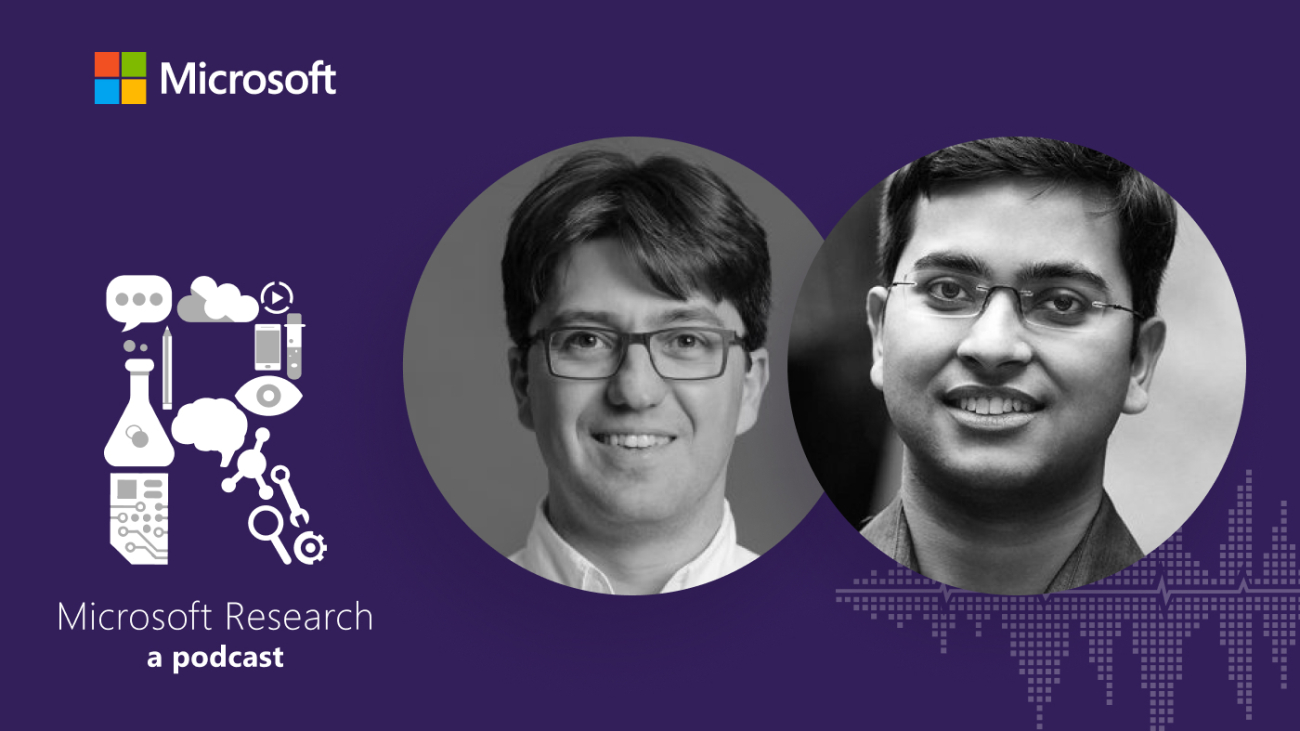





 communication technology with collaborators from the
communication technology with collaborators from the 





